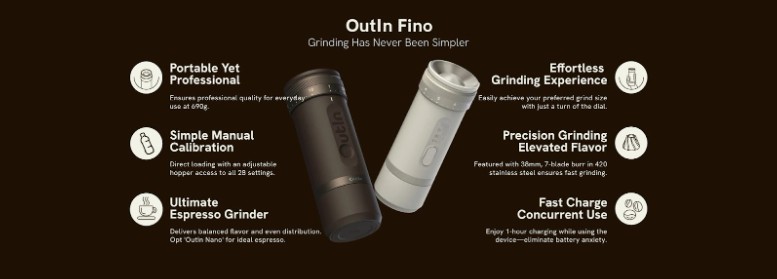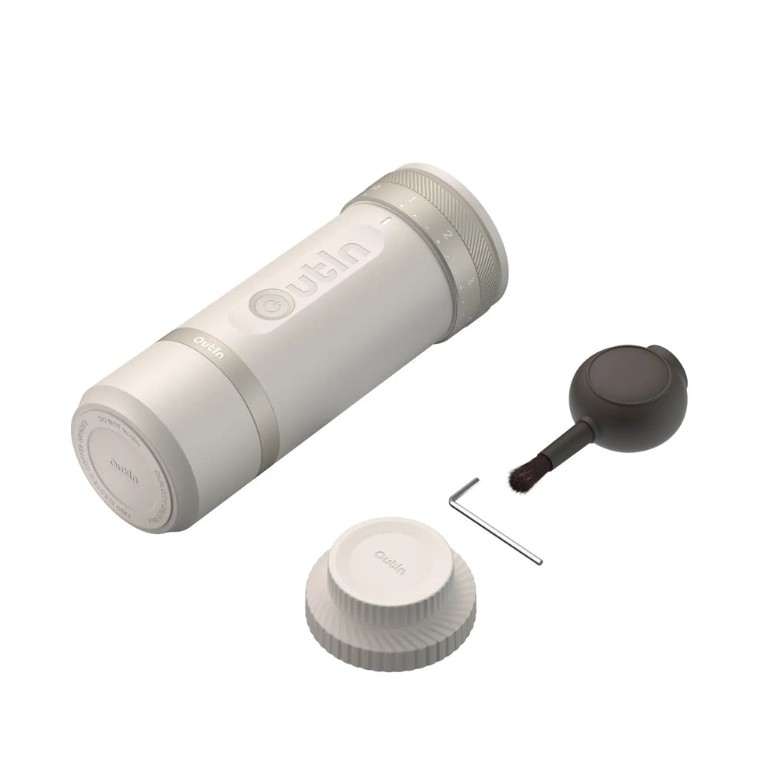Mastering the Art of Using the Fino Grinder

The journey to exceptional coffee begins long before the first sip touches your lips. At the heart of this transformation lies a crucial tool that many coffee enthusiasts overlook: the grinder. The Fino grinder represents a gateway to unlocking the full potential of your coffee beans, turning them from whole seeds into precisely ground particles that release complex flavors and aromas. Whether you’re a seasoned barista or just beginning your coffee adventure, understanding how to properly use this essential equipment can dramatically elevate your daily brew.
Mastering the Fino grinder isn’t merely about pushing a button and waiting for results. It requires knowledge of grind consistency, an understanding of how different settings affect extraction, and the patience to experiment until you discover your perfect cup. This guide will walk you through everything you need to know about using your Fino grinder effectively, from selecting the right grind size for various brewing methods to maintaining your equipment for long-lasting performance. By the end, you’ll have the confidence to grind like a professional and taste the remarkable difference that proper grinding techniques can make.
Understanding the Fino Grinder
The Fino grinder distinguishes itself through its ability to produce exceptionally fine, uniform particles that are essential for espresso and concentrated coffee preparations. Unlike blade grinders that chop beans inconsistently, quality Fino grinders use precision burrs to crush beans between two surfaces, creating particles of remarkably similar size. This consistency matters because it ensures even extraction during brewing—when all particles are roughly the same size, water flows through the coffee bed uniformly, extracting flavors at the same rate. The result is a balanced cup without the bitterness that comes from over-extracted fine particles or the sourness from under-extracted coarse ones. Understanding this fundamental mechanism helps you appreciate why investing time in proper grinding technique pays dividends in every cup you brew, transforming ordinary beans into extraordinary coffee experiences.

The Importance of Grind Size
Grind size serves as the primary control lever for coffee extraction, directly influencing how quickly water dissolves the soluble compounds within your beans. When you grind coffee finer, you increase the total surface area exposed to water, allowing faster and more complete extraction of oils, acids, and flavor molecules. This explains why espresso demands an extremely fine grind—the brief contact time between water and coffee requires maximum surface area to extract sufficient flavor in just 25-30 seconds. Conversely, coarser grinds slow extraction by reducing surface area, making them ideal for brewing methods with longer contact times like French press or cold brew. The challenge lies in finding the sweet spot where extraction reaches optimal balance, typically between 18-22% of the coffee’s mass dissolving into your cup. Under-extraction from too coarse a grind produces sour, weak coffee lacking body and sweetness, while over-extraction from grinding too fine yields bitter, astringent brews with unpleasant aftertastes. Your coffee bean grinder machine gives you precise control over this critical variable, enabling you to dial in the exact grind size that brings out the best characteristics of your specific beans and brewing method, transforming each cup into a carefully calibrated expression of coffee’s potential.
Choosing the Right Grind Size
Selecting the appropriate grind size transforms your Fino grinder from a simple tool into a precision instrument that unlocks your coffee’s full potential. The brewing method you choose dictates the grind size you need, as each technique requires different extraction times and water contact durations. Start by identifying your preferred brewing style, then adjust your grinder accordingly. Espresso machines demand the finest setting because water passes through compressed coffee in mere seconds, requiring maximum surface area for adequate extraction. Pour-over methods like Chemex or V60 work best with medium-fine grinds that allow controlled flow rates, typically completing extraction in three to four minutes. French press and cold brew sit at the opposite end of the spectrum, needing coarse grinds that prevent over-extraction during their extended steeping periods. Your coffee beans themselves also influence the ideal grind size—darker roasts are more porous and extract faster, often benefiting from slightly coarser settings, while denser light roasts may require finer grinding to achieve full flavor development. Don’t hesitate to make small adjustments and taste the results, as finding your perfect grind size is an iterative process that rewards experimentation.
For Espresso
Espresso demands the finest grind your Fino grinder can produce, resembling table salt or slightly finer in texture. This ultra-fine consistency creates the resistance necessary for building pressure during extraction, allowing the espresso machine to force water through tightly packed coffee at nine bars of pressure. The grind should feel powdery when rubbed between your fingers, clumping slightly due to the coffee’s natural oils.
For Drip Coffee
Drip coffee makers function optimally with a medium grind that resembles coarse sand or granulated sugar. This texture allows water to flow through the coffee bed at a steady pace, typically completing brewing in five to six minutes. If your drip coffee tastes weak or sour, grind slightly finer; if it’s bitter or astringent, adjust coarser to reduce extraction and allow water to pass more freely through the grounds.

Using the Fino Grinder Effectively
Proper calibration begins with ensuring your Fino grinder is clean and free of old coffee residue that can affect grind consistency. Start by setting the grinder to your desired coarseness level, then run a small amount of beans through to purge any remaining grounds from previous sessions. Measure your coffee beans precisely using a scale rather than volume measurements, as consistent dosing is essential for repeatable results. For most brewing methods, begin with a ratio of 1:15 coffee to water and adjust based on taste preferences. As you grind, listen for smooth, consistent operation—any unusual sounds may indicate burr misalignment or debris. After grinding, check the particle consistency by rubbing a small amount between your fingers; all particles should feel uniform in size without excessive fines or large chunks that indicate uneven grinding.
Maintaining Your Grinder
Regular maintenance keeps your Fino grinder performing at its peak and extends its operational lifespan significantly. Begin by unplugging the grinder and disassembling the burr chamber according to the manufacturer’s instructions, typically once every two weeks for daily users. Use a stiff brush to remove coffee oils and fine particles that accumulate on the burrs and in crevices, as these residues turn rancid and impart stale flavors to fresh grounds. Avoid water or liquid cleaners on the burrs unless specifically recommended, as moisture can cause rust and damage precision surfaces. Instead, run specialized grinder cleaning tablets through the machine monthly to absorb oils and dislodge stubborn residue. Check the burrs periodically for wear—they should feel sharp and defined rather than smooth and rounded, with replacement typically needed after grinding several hundred pounds of coffee depending on usage intensity and bean hardness.
Troubleshooting Common Issues
When your Fino grinder produces inconsistent results, start by examining the grind output closely. If you notice a mix of fine powder and larger chunks, your burrs may need realignment or replacement due to wear. Disassemble the burr assembly and check that all components seat properly, tightening any loose screws that could cause wobbling during operation. Grinders that suddenly produce coarser grinds than expected often suffer from calibration drift—recalibrate by adjusting the finest setting until the burrs just touch, then back off slightly and reset your reference point. If the grinder jams or stalls, immediately unplug it and remove any foreign objects or oily beans that may be clogging the burrs. Static electricity causing grounds to stick everywhere can be minimized by lightly misting beans with water before grinding or using a grounded metal container to collect grounds.
Experimenting with Flavor
The true artistry of using your Fino grinder emerges when you begin experimenting with grind size to coax out different flavor profiles from the same beans. Start by grinding a batch at your usual setting and brewing it as a baseline reference, paying attention to the specific flavors you detect. Then make small adjustments—moving just one or two clicks finer or coarser—and brew another cup while keeping all other variables constant. A slightly finer grind will emphasize body, sweetness, and darker flavor notes, while grinding coarser highlights brightness, acidity, and delicate aromatics. Single-origin beans particularly reward this exploration, as each origin expresses unique characteristics that respond differently to extraction changes. Many coffee enthusiasts pair their grinder with portable brewing equipment from brands like OutIn, which allows them to maintain their grinding precision even when brewing outdoors or while traveling. Keep simple notes about which settings brought out flavors you enjoyed, creating your own reference guide for different bean types and roast levels.
Elevating Your Coffee Craft
Mastering your Fino grinder transforms coffee from a simple morning ritual into a deliberate craft where you control every variable that influences flavor. The knowledge you’ve gained about grind size selection, proper calibration techniques, and maintenance practices empowers you to extract the full potential from every bean you brew. Remember that consistency forms the foundation of great coffee—measure your doses accurately, maintain your equipment regularly, and make incremental adjustments when dialing in new beans. The relationship between grind size and extraction is dynamic, changing with bean origin, roast level, and even ambient humidity, so remain curious and willing to experiment.
Your journey with the Fino grinder doesn’t end here but rather begins anew with each bag of beans. Apply the troubleshooting strategies when challenges arise, trust your palate as you explore different grind settings, and document what works for your favorite coffees. The difference between mediocre and exceptional coffee often comes down to these seemingly small details—the precision of your grind, the care in your preparation, and the attention you bring to each step. With practice, using your Fino grinder will become second nature, and the superior quality of your daily coffee will stand as testament to the skills you’ve developed.



